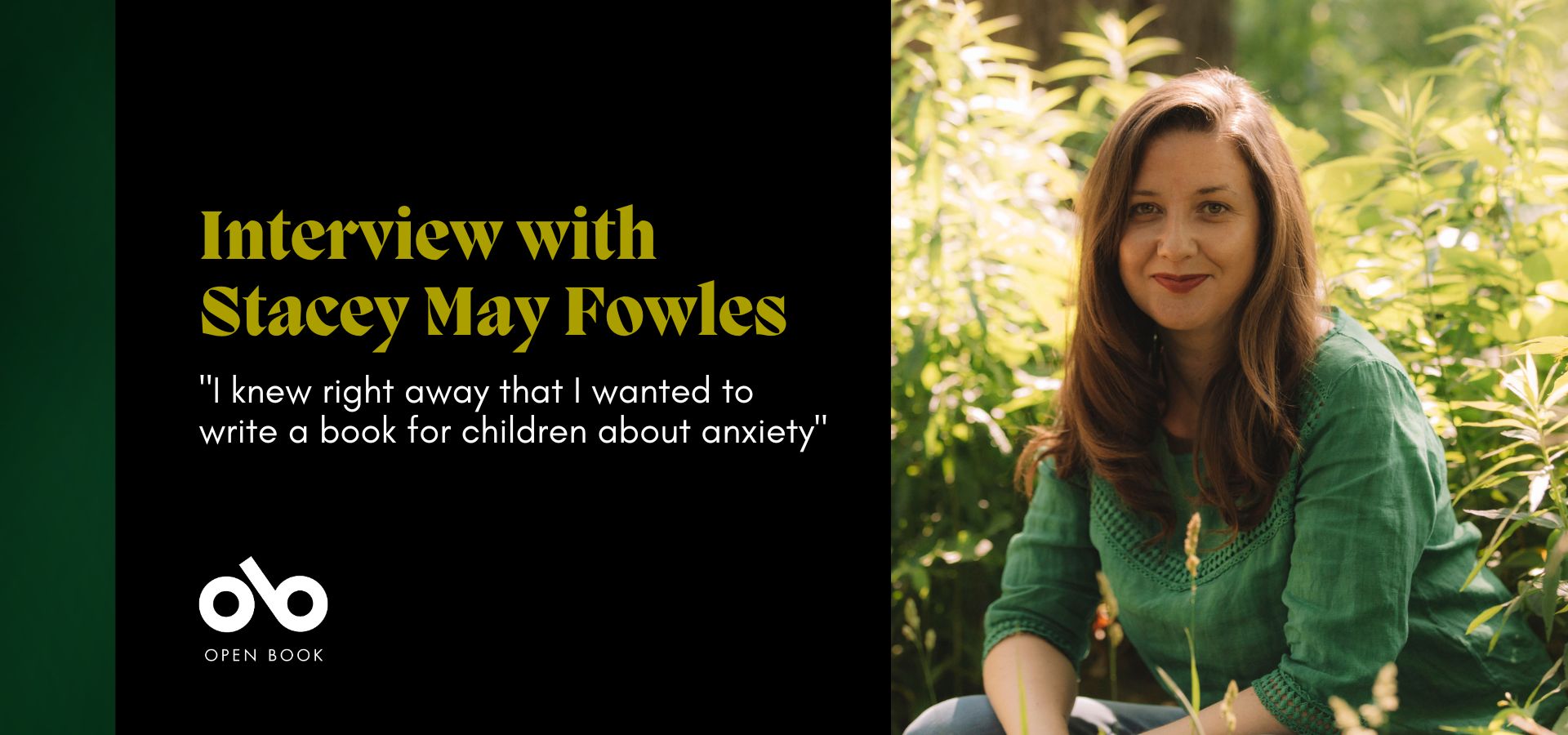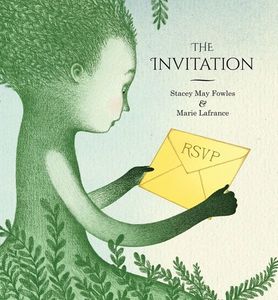Stacey May Fowles' Gentle & Beautiful Debut Picture Book Utilizes CBT Techniques to Help Kids Manage Anxiety
Stacey May Fowles' celebrated nonfiction has shown her ability to explore mental health, anxiety, and connection through subjects as diverse as baseball, reading, motherhood, and more. Also an acclaimed novelist, Fowles is continuing to expand her literary horizons with a debut picture book this season, bringing her insight and wit to young readers in The Invitation (Groundwood Books, illustrated by Marie Lafrance).
When forest dweller Fern receives an unexpected party invitation, her anxiety about everything that could go wrong spirals. Worrying about getting there, fitting in, making friends, and more, Fern can't help but go down a road of catastrophizing (as it's often referred to in cognitive behaviour therapy conversations) – becoming paralyzed by imagining the worst possible outcomes in a given situation.
Luckily, Fern has a supportive friend in Fawn, who patiently encourages Fern and works with her to follow her worried thinking through to its end – and therefore confront how even the worst possible outcomes can be managed (and the unlikeliness of them even occurring). As they travel to the party, the winsome pair meet an adorable cast of characters, including a grumpy-but-helpful bear friend and an informative chipmunk. Lafrance's dreamy and ethereal illustrations create a whimsical, tranquil environment for a story that takes kids' worries seriously and helps equip them with life-long tools.
We're speaking with Stacey, who also writes the popular Book Therapy column here at Open Book, today about The Invitation. She tells us about her own experiences with anxiety, including after her daughter was born, and how they motivated her to create The Invitation; how Fern and Fawn can be seen both as separate characters and as two voices in the same mind; and how it is important for writers to be gentle with themselves and remember "that a life in writing is long and varied... there are different moments, that every one of them—even disappointment—is important".
Open Book:
Tell us about your new book and how it came to be.
Stacey May Fowles:
I was a relatively new mother, still on maternity leave, when children’s literature genius Serah-Marie McMahon asked me if I’d ever thought about writing a picture book. I was in the kind of overtired postpartum place where it felt really difficult to get any words on the page at all, but she was the push I needed to embark on a new project I felt passionate about, and I’ll be forever grateful to her for that.
I knew right away that I wanted to write a book for children about anxiety—it’s something I’ve dealt with my entire life—and after many incarnations and helpful reads from a few of my children’s author friends, Fern’s catastrophic thinking and Fawn’s reassuring voice were born. I’m also very lucky that the amazing Karen Li at Groundwood was interested in the tiny world I’d created, and of course grateful for her insight and editorial vision that really brought this story to fruition.
OB:
Is there a character in your book that you relate to? If so, in what ways are you similar to your character and in what ways are you different?
SMF:
Definitely Fern. I’d like to claim that her fear of the mailbox is an invention, but there was definitely a period of my life when I was dealing with some pretty severe anxiety and was actually afraid of things as seemingly innocuous as the mail. (And crowded spaces, and public speaking, and doctor’s appointments, and elevators, and airplanes, and subways, and—)
Part of what helped me cope with my own anxiety (besides a really great cognitive behavioural therapist) was thinking through possible “what if” scenarios to their completion and coming to an understanding that I could cope with whatever came. Fern’s friendship with Fawn is really about having a strong relationship with that inner voice, the one that says, “Sure, bad things may happen, but you can deal with them. In fact, what’s far more likely is that the bad things won’t happen at all.”
Your CanLit News
Subscribe to Open Book’s newsletter to get local book events, literary content, writing tips, and more in your inbox
OB:
What was the strangest or most memorable moment or experience during the writing process for you?
SMF:
Definitely seeing Marie Lafrance’s incredible illustrations for the very first time. As a writer you have these vague ideas in your head about what your characters look like, what form their journey will take, and then an illustrator like Lafrance exceeds every possible expectation and quite simply takes your breath away. It was as if she knew better than I did who these creatures were and how to truly bring them to life. I’m so grateful I got to have that truly magical collaborative experience—I was quite moved by it.
OB:
What do you need in order to write – in terms of space, food, rituals, writing instruments?
SMF:
I’m sure I used to have very specific answers for a question like this but now I realize—maybe after living through a pandemic, maybe after becoming a parent, maybe after writing a few books—that the conditions for writing are never going to be just right. You just have to get it done. Writing is, quite simply, work, and the only way to have a writing life is to have momentum. To just get moving and see what happens. Creating some sort of magical perfect environment is never going to serve that.
OB:
How do you cope with setbacks or tough points during the writing process? Do you have any strategies that are your go-to responses to difficult points in the process?
SMF:
If I’m honest, I find the business of writing pretty frustrating at times, along with this increasing and near constant pressure to be promoting yourself to the world. (I mean of course I do, I wrote a book about anxiety.) I like to remind myself that a life in writing is long and varied, containing many seasons and many phases. There are times to be quiet and reflective, times for intense work, time for genuine play, and times to be out in the world talking about what you’ve made. Understanding that the there are different moments, that every one of them—even disappointment—is important, and to lean into that natural process has certainly helped me cope with the natural ebb and flow, ups and downs of being a writer.
OB:
Do you feel like there are any misconceptions about writing for young people? What do you wish people knew about what you do?
SMF:
As far as misconceptions go, either that it’s easy or that it doesn’t take very long to write a children’s book. It’s not easy. And it certainly takes much longer than you would think.
OB:
What are you working on now?
SMF:
I’ve just turned in a draft of my second picture book to Groundwood, and I’m editing an essay collection I wrote during those truly dire depths of the pandemic. There are also a couple of novel drafts haunting my laptop that I’m hoping to get back to at some point, but you know—ebb and flow, ups and downs.
______________________________________________
Stacey May Fowles is a multiple award-winning journalist, essayist, and author of four books, including the national bestseller, Baseball Life Advice: Loving the Game that Saved Me. She is the co-editor, with Jen Sookfong Lee, of the anthology Good Mom on Paper: Writers on Creativity and Motherhood. A former columnist at the Globe and Mail, Stacey currently writes the Book Therapy column for Open Book. She lives in Toronto, Ontario, with her husband and daughter.





